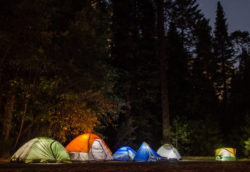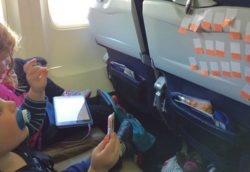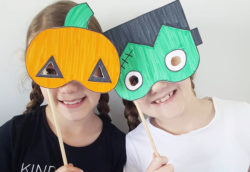Most of us are fascinated with the stars and universe. Do you ever look up at the sky at night and wonder what are you eyeing at? Learning astronomy for beginners can be fun and we are going to talk more about it here. When the astronomy bug bit you while you were out last night gazing at the sky feeling inspired to learn more, here’s the place to start. We also have listed some projects to help your kids get interested in astronomy and space. Read more to know.
For more than thousands of years, people have wondered what these sparkling things in the sky are. How far are they from us? What and how do they arrange themselves in the sky? Why do they keep changing their locations every day in the sky and why? Yes, humans have been able to find some answers and still finding few more. But if you are one of them who think how you can enjoy the most out of gazing at the sky? It’s a good question, one that deserves a sensible answer, as many newcomers to astronomy feel lost and frustrated after blundering down some wrong trail. Such experiences, widely shared, create a general public impression that astronomy is a tough hobby to get into. But this impression is altogether wrong and unnecessary.
Be it a different range of telescopes or binoculars or the stargazing basics, we have some information for you to help you learn the astronomy basics.
Learn the Night Sky:
Stargazing basics isn’t a tough thing. Like you have a map to find the way in a new place, similarly, you can find your way around the night sky as well. Know about the major constellations first and the planets which are viewable in the evening sky.

1. Read via a Public Library:
Astronomy is a continuous learning. It is a hobby that gives you pleasure by from intellectual discovery and knowledge of the enigmatic night sky. Unless you have someone who can help you to start discovering or an astronomy club nearby you, you have to make all the sightings and gain the information all by yourself. In a way, you need to do self-study to learn.
The public library is the novice’s most significant astronomical tool. You need to go through the entire astronomy shelf for beginner’s guides. Gather all you can to aid yourself to learn about the stars you see in the night sky. One of the best ways to go about it is also to start with the big two-page sky map that seems closer to the center of each month’s Sky & Telescope, which the library ought to have. When you have a topic of your interest, follow it up in additional books.
Many people look for a course offering to learn astronomy. Doing so can be helpful too. But just learning it all isn’t enough unless you spend time observing and looking into the sky. Self-education is the thing for you to do it yourself, with books via the library.
2. Study the Sky with the Bare Eye:
As we know that astronomy is an open-air nature interest and hobby. Get outside at night and learn the basic astronomy by knowing the names of the stars and patterns they make overhead called constellations. The constellations(R) are the pattern of stars that move across the sky and turn sidelong or even upside-down, but they won’t grow bigger or lesser or transform their figure or shape in any other way. There are books and materials that you can refer to know more and gather information about the different mythology of the constellations and how the stars change through the night and the time of year.

3. Do Not Rush to Buy a Telescope:
Not necessary that you spend a fortune to pursue your hobby. Although, astronomy being an educative hobby, has no compulsion on the educational fee. But a lot of people think otherwise and get frustrated after their big buy of the telescope. They think buying telescope is the essential first step to astronomy! But seriously? Without knowing what are you looking for? It doesn’t work that way, does it?
To put a telescope to a worthwhile use, the first step is to know the constellations as seen with the naked eye. You must be able to identify the starts and learn things among them with a basic sky charts. You must know what a telescope can do and most importantly, what it will not do. And have enough knowledge about the substances you’re seeking to identify and appreciate them.
The people who began with the least equipment are the most successful, lifelong astronomers. They had to gather more of their information from the books, map use, sky knowledge, and fine-tuning their spotting through eye observation. What they were short of is the practical approach via the gears. The skills gathered by them helped them to establish a good base when the gear came later.
A disappointing yet factual theory is that there is no shortcut to astronomy. Although with the technologically advanced world, robots in the market point at astronomical object automatically. They represent an enormous milestone in the world of astronomy. You do not need to know the sky any longer.
The computerized way of dealing with the stars is far more effective than the old way of learning the sky or by using a map — probably you know better on what’s worth telling the computer to point at. But the whole technology thing is very expensive, and opinions about it might differ and vary. At least for the beginners, there should be some consensus that a computerized scope restricts you to make a stronger base by learning to get around by yourself and sometimes you are left helpless if anything goes wrong as you do not know how to debug it. Moreover, the details that you tend to miss out as well as the pleasures of making your own findings and journeys through the sky.
4. Begin with the Binoculars:
A pair of binoculars is the old school “first telescope,” for several causes. Binoculars illustrations a wide field, making it easy to find your way about; a higher-power telescope enlarges only a tiny, hard-to-find spot of sky. Binoculars help you with a view that’s right in front of you, making it simple to see where you’re pointing. An astronomical telescope’s vision is upside down. Sometimes it gives a mirror-imaged, and usually offered at right angles to the line of eyesight.
Binoculars as compared to the telescopes are also fairly economical, easily available, and handy unlike the telescope.
Binocular’s findings are pretty respectable too. Binoculars improve on the naked-eye vision with the ordinary 7- to 10-power about as a good as an amateur basic telescope improves on the binoculars. In other words they get you halfway through with a lesser cost.
The larger the front lenses for astronomy, the better the view is. Another important factor is the high optical quality. But any binocular that’s already in your wardrobe is good to start your curiosity about astronomy.
5. Relax and Make It Fun:
Do not get upset with your telescope for not being perfect. No matter what you have or paid, perfection doesn’t exist. Don’t be bothered too much about things like cleaning the lenses or mirrors and having your observing notebook organized.
And don’t feel obligated to do “useful work” right in the beginning; don’t bog down to the pressure. Ultimately, the most satisfying deal of the amateur astronomy involves collecting scientific figures — volunteering into the nightly wilderness to bring home some bits of data that will progress humanity’s knowledge of the space and universe in some tiny but factual way. Such a project often marks the makeover from “beginner” to “advanced amateur,” from casual sightseer to cosmic passionate. Only when they’re good and ready, that it works for them. Amateur stargazing should more for fun. Take it at your own speed and go about it as you wish.
Kid’s Astronomy for Beginner’s Activities:
1. Stoned Space :

Teach the kids to paint the stones with various planets. The picture shows White Aztec Pebbles which are painted with acrylic paint and finished with a clear spray seal.
2. Blackboard Space:

Make use of the blackboard for drawing the solar system on it.
3. Phases of the Moon:

Draw the eight phases of the moon: naming each as new moon, waxing crescent, first quarter, waxing gibbous, full moon, waning gibbous, last quarter, waning crescent
4. Personalized Constellation:

Embroider the constellation with the kid’s name in the center as shown. This helps kids to become curious to learn the night sky.
5. Egg Dyed Planets:

This is an excellent way to indulge your kids in the learning of solar system. Materials you will need are – Hard boiled or dry blown out white eggs, Paint, String, Felt, Paper, Typewriter or pen.
6. Space Man:

This activity, indulge kids in the planetarium and help them make their very own spaceman take home and put it on display. This has been done using modeling clay which you can mold and design your own astronaut for a forthcoming mission to space. Add on all the detailing to make it even more real.
7. Constellation Cards:

Help kids make their own constellation cards, use it as storytellers for the little ones, you never know they may be the budding astrologers.
8. Constellation Cookies:

A fun and an amazing way to get your kid interested in astronomy! Eat, learn and have fun.
9. A Space Unit:

The paper mache solar system project made with the kid to teach them about space.
10. Constellation with Thread and Nail:

These constellations are made on a wooden plank with the nails and thread wrapped around to structure as a constellation. The kid will need adult’s supervision and help to create this.









































